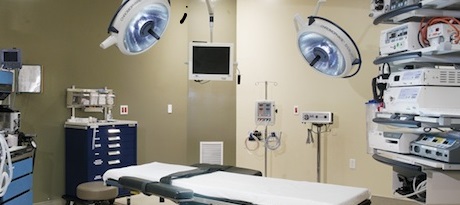The search for the ravaging scourge of some infectious diseases including cholera, typhoid fever, small pox and the rest, and an urgent need to end their prevailing end of human lives some decades ago gave impetus to the full development of epidemiology. Epidemiology as a field in the medical sciences and as an important discipline in public health could not have developed if not for the foremost roles played by some very fine scientists such as John Snow and Robert Koch amongst others. Some 2000 years ago, Hippocrates observed that the occurrence and development of disease in a population is influenced by some host and environmental factors.
In 1662, a Londoner, John Graunt, was the first to introduce and develop the measurement of disease in a population by looking at the variations in birth rate, death rate, disease occurrence and other environmental factors associated with disease emergence and spread. Graunt’s work was later built upon and taken some steps further in the early 1800’s by William Farr (a fellow Londoner) who introduced statistics and surveillance into the discipline of epidemiology. William Farr systematically collected and analyzed the death rate of Britain and, his many works helped epidemiologists even till date to classify disease based on their mortality and morbidity rates and other factors of measuring disease emergence and spread in a population.
The father of epidemiology and the first epidemiologist is known to be John Snow (who conducted series of independent research between 1849 and 1854 to set the foundation of the discipline of epidemiology). Snow pioneered the application of disease mapping to the study of epidemiology and public health which is applied even till date in the mapping of infectious diseases. John Snow (a British anaesthesiologist) conducted studies on cholera outbreak at a time when cholera was ravaging many parts of London, England; and his work was centered on unraveling the cause of the disease and to prevent its reoccurrence. He observed through his investigations that the risk of cholera disease in London was as a result of drinking contaminated water by those affected by cholera disease.
Snow had earlier investigated the outbreak of cholera amongst coal miners and concluded that the disease was spread as a result of unwashed hands and the sharing of foods. But during the 1849 cholera outbreak of cholera in London, England, he later discovered that the cholera disease was actually spread by water and not shared foods or unwashed hands. He determined the residence and working places of cholera-affected people and used the information gathered to develop a “spot map” which enabled him to determine the distribution of disease cases in the affected population.
John Snow scrutinized the death records of cholera deceased persons and discovered that they had lived closely to a particular pump in London, England (the Broad street pump) and had at some instances drank water from the pump. Snow gathered information from persons infected with cholera in a bid to finding their common source of drinking water, and it was discovered that the Broad Street pump was the only common factor among the cholera infected patients. It was later discovered that the Broad street pump was contaminated by sewage which contained the causative agent of cholera.
John Snow then concluded that the cholera disease was spread by drinking water from the Broad street pump (which served as the primary source of water for most people with cholera disease in the broad street). The spread of the cholera disease was repressed when the handle of the Broad street pump was removed and, this drastically reduced the number of deaths that resulted from cholera outbreak in Broad Street, London. John Snow had noted that the 1849 cholera outbreak in London was due to the drinking of water supplied by two water companies (Lambeth company and Southwark and Vauxhall company) that both obtained their water from a river known as Thames river which was below levels of the river where Londoners had disposed their sewage and refuse.
One of the water companies (Lambeth) later changed its location to above the Thames River, and thus obtained water that was free from sewage. Still on the cholera disease, another cholera outbreak that occurred in London in 1854 led John Snow to postulate that water contaminated by sewage was primarily responsible for the transmission of cholera disease in London, England. Snow investigated a number of households at the time in respect to their different source of drinking water in London, England as a way of putting an end to the source of transmission of cholera disease and its future prevention. He demonstrated through his various epidemiological studies (which centered on the cholera disease at the time) that water could serve as the medium for the transmission of cholera and, that the causative agent responsible for the disease must be able to proliferate in water.
The awareness about the existence of microorganisms was still arcane and yet to be discovered as at the time John Snow observed and concluded his epidemiologic work on cholera disease outbreak and spread. But his discoveries (which was based on the classification of disease cases and the population at risk by person, time and place) in this important discipline as at the time nevertheless, contributed immensely to the steps used for studying disease outbreak even till date.
John Snow observed and showed that epidemiological data could be used to determine disease emergence and spread, and implement appropriate public health interventions to prevent the reoccurrence of the disease. Snow’s thorough research helped influenced public health policy in London, England and it also encouraged improvements in water supply and sanitation. His meticulous work which was solely based on epidemiologic data (rather than the traditional disease-spotting) impacted public health even till date and; it set the landmark for the application of epidemiological information in the tracking of disease occurrences (i.e. infectious communicable diseases) across Europe and in other parts of the world.
Robert Koch in 1883 discovered that the actual causative agent of cholera disease which John Snow had painstakingly worked on using epidemiologic information was due to a spiral shaped bacterium known as Vibrio cholerae. Typhoid fever which is caused by Gram negative bacterium (Salmonella typhi) is another infection which killed many people in the early 1900s and, the infection/disease emerged when people ate food handled or prepared by individuals that produced the S. typhi bacterium. It was also discovered that typhoid fever was discovered among those who drank water contaminated with sewage.
Typhoid fever bacterium (S. typhi) was traced to a New York cook known as Mary Mallon who spread the bacterium in the different places she worked as a cook in New York. She was later arrested and isolated in the hospital. It was discovered that her stool produced large numbers of S. typhi even though she displayed no signs or symptoms of typhoid fever infection. She was later released after pledging that she will not cook for the public again. But Mary Mallon (Typhoid Mary as she was called as at the time) changed her name and continued in her profession of cooking and serving food to the public, and this enabled her to shed and spread S. typhi bacterium in those instances. She was later arrested again and held for 23 years until she eventually died in 1938.
Following the achievements in the use of epidemiological data to determine the occurrence of infectious disease in a population, epidemiologists applied the same principle in the determination of the emergence and spread of some noninfectious (non-communicable) diseases such as cancer and cardiovascular diseases which are barely caused by a disease-causing agent (or pathogen). In some occasions, environmental factors and behavioural factors such as smoking was strongly linked to some noninfectious diseases like lung cancer. Many communicable diseases such as measles, small pox, and chicken pox amongst others have been totally eradicated or brought under control due to epidemiological studies which skyrocketed tremendously after the Second World War. Epidemiological studies are being routinely applied by researchers and public health workers, and they have helped to improve the health standards and sanitation of the general population on a global scale.
References
Aschengrau A and Seage G.R (2013). Essentials of Epidemiology in Public Health. Third edition. Jones and Bartleh Learning,
Aschengrau, A., & G. R. Seage III. (2009). Essentials of Epidemiology in Public Health. Boston: Jones and Bartlett Publishers.
Balows A, Hausler W, Herrmann K.L, Isenberg H.D and Shadomy H.J (1991). Manual of clinical microbiology. 5th ed. American Society of Microbiology Press, USA.
Bonita R., Beaglehole R., Kjellström T (2006). Basic epidemiology. 2nd edition. World Health Organization. Pp. 1-226.
Brooks G.F., Butel J.S and Morse S.A (2004). Medical Microbiology, 23rd edition. McGraw Hill Publishers. USA.
Castillo-Salgado C (2010). Trends and directions of global public health surveillance. Epidemiol Rev, 32:93–109.
Centers for Disease Control and National Institutes of Health (1999). Biosafety in Microbiological and Biomedical Laboratories, 4th edn, Washington DC: CDC.
Champoux J.J, Neidhardt F.C, Drew W.L and Plorde J.J (2004). Sherris Medical Microbiology: An Introduction to Infectious Diseases. 4th edition. McGraw Hill Companies Inc, USA.
Gordis L (2013). Epidemiology. Fifth edition. Saunders Publishers, USA.
Guillemin J (2006). Scientists and the history of biological weapons. European Molecular Biology Organization (EMBO) Reports, Vol 7, Special Issue: S45-S49.
Halliday JE, Meredith AL, Knobel DL, Shaw DJ, Bronsvoort BMC, Cleaveland S (2007). A framework for evaluating animals as sentinels for infectious disease surveillance. J R Soc Interface, 4:973–984.
Lucas A.O and Gilles H.M (2003). Short Textbook of Public Health Medicine for the tropics. Fourth edition. Hodder Arnold Publication, UK.
MacMahon B., Trichopoulos D (1996). Epidemiology Principles and Methods. 2nd ed. Boston, MA: Little, Brown and Company. USA.
Nelson K.E and Williams C (2013). Infectious Disease Epidemiology: Theory and Practice. Third edition. Jones and Bartleh Learning.
Porta M (2008). A dictionary of epidemiology. 5th edition. New York: Oxford University Press.
Rothman K.J and Greenland S (1998). Modern epidemiology, 2nd edition. Philadelphia: Lippincott-Raven.
Rothman K.J, Greenland S and Lash T.L (2011). Modern Epidemiology. Third edition. Lippincott Williams and Wilkins, Philadelphia, PA, USA.
Discover more from Microbiology Class
Subscribe to get the latest posts sent to your email.





